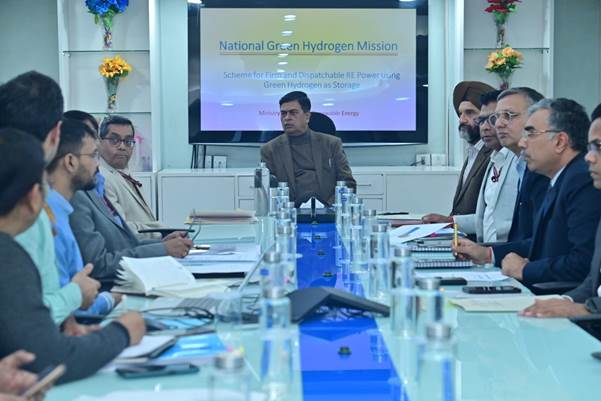Union Minister for Power and New and Renewable Energy, RK Singh, chaired a meeting in New Delhi on Tuesday to discuss the utilization of green hydrogen alongside solar and wind energy for continuous renewable energy supply.
India ranked fourth globally in renewable energy and wind power capacity and fifth in solar power capacity in 2023, according to data from the International Renewable Energy Agency. This aligns with the government’s push to increase renewable energy adoption, as outlined in the National Green Hydrogen Mission.
The meeting saw participation from officials from the Ministry of New and Renewable Energy, Ministry of Power, NTPC, Central Electricity Commission, and Solar Energy Corporation of India. They deliberated on utilizing green hydrogen as a storage medium to support continuous and peak power demand.
Policy mechanisms, including a Contract for Difference (CfD) methodology based on market price differentials, were discussed to support such projects. Minister Singh directed officials to draft scheme guidelines considering economic factors, technologies, and market conditions in the green hydrogen and power sectors. He emphasized the importance of continuous renewable energy in reducing costs and enhancing affordability amid rising power demand.
Green Hydrogen Initiatives:
India has introduced several initiatives to promote green energy. Producers of green hydrogen and ammonia are exempt from inter-state transmission charges for 25 years for projects commissioned before December 31, 2030. The Electricity (Promoting Renewable Energy through Green Energy Open Access) Rules, 2022, facilitate renewable energy supply for green hydrogen production via open access.
National Green Hydrogen Mission:
The Union Cabinet approved the National Green Hydrogen Mission on January 4, 2023. The mission targets a green hydrogen production capacity of at least 5 million metric tons per annum and an additional 125 GW of renewable energy capacity by 2030. It aims to reduce fossil fuel imports by ₹1 lakh crore by 2030 and create over 600,000 jobs.
Expected Benefits:
The National Green Hydrogen Mission is anticipated to provide export opportunities, decarbonize industrial and energy sectors, reduce reliance on imported fossil fuels, foster indigenous manufacturing, generate employment, and drive technological advancements.














